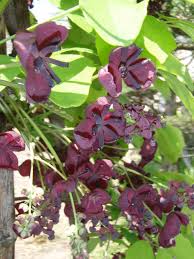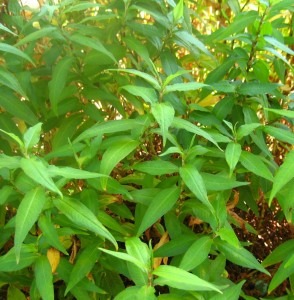There is little to compare in succulence with a tomato or peach that’s enjoyed a sun-drenched life. The challenge is more of us want shade to counter the effects of a warming world and a home that needs natural shade, exteriors protected from fierce heat, but also continue to grow our own healthy chemical-free food plants.
It’s true that in the hottest parts of the country all plants benefit from a little shelter to conserve moisture and modify air temperature. And just when you have shade in the garden, and for how long, also needs to be defined.
And when it is shady does matter: there are cool season vegetables that through summer accept morning sun happily but prefer shady afternoons. This kind of benevolent shelter can make the growing seasons longer for plants like lettuce that tend to bolt in the heat.
And with the rise in average temperatures worldwide there may well be more room now to embrace the shade/edible connection.
Permaculture forums identify a diverse range of reduced-light tolerant plants worth trying, especially in warmer zones. Arrowroot Canna edulis happy to grow beneath tree canopies, was an ancient Inca crop and also has an interesting history in north Queensland where it was eaten regularly in early days of settlement, and the SE Asian edible fern Diplazium esculentum is a subtropical favourite, popular in Indonesia. Similarly, species from Zingiberaceae offer food treats, including the resurrection lily, Kaemferia galangal (known as kencur) a key ingredient for Balinese and Javanese sate sauces. Lots of palms have edible hearts and the paw paw Asimina triloba, from American temperate humid zones, is one of the few trees that is able to fruit in shade.
Rising populations in our cities indicate gardens will continue to be smaller and shadier, often cut off from sun by a neighbouring building. The classic vegetable patch needs adaptation – certainly smaller, often using vertical spaces, but also crucially planned to accommodate the amount of light – or lack of it – using a strategy that prevents some of the problems associated with shade.
And in moderation shade does no harm to sun-loving plants: even broccoli, cabbage, peas and beans, rhubarb and strawberries can make it through with limited shade (though admittedly reduced yield).
Talking stygian gloom is altogether different, but there are crops that will do remarkably well if other nutrient and water needs are cranked up to produce a highly fertile soil environment.
The first step is to grade your shade. It is a fairly vague description, ranging from light caused by low-hanging branches in the pathway of the sun, to partial for several hours each day or full for half a day. The complexity of assessing shade in any garden comes in calculating sunlight hours through each season. And when chasing heat and light sometimes a mobile vegetable garden can be feasible.
In colder areas of the country where the growing season is shorter, coping with shade is more difficult: what might be possible on the Sunshine Coast will be unthinkable for Tasmanian gardeners. It’s observed in Adelaide that food plants believed to want full sun actually tend to do better with some shade. So as a general rule, edible plants, like other types, have to be chosen selectively, beginning with your geographic location.
Lumbered with low light, a gardener must be particularly vigilant to support the growing crops by providing optimum soil and water conditions. Other things could help too … a little more room between plants and careful weeding both bring returns.
Some obvious tasks: get rid of all the branches possible to clear a pathway of light to the crops, minimise the presence of tree roots which suck up water meant for the crops, and look at the way air can circulate around the garden beds because both plants and surrounding built structures can encourage the kind of moisture which invites moulds and other diseases.
Plastic foil mulches can increase photosynthesis and productivity due to higher light levels and are often used for commercial growing. They aren’t endorsed by organisations such as SGA, which believes the disadvantages created – a potential cooking of roots beneath the mulch and leaching of chemicals from plastic into the soil – far outweigh benefits. As an alternative, bright and light painted surfaces to walls or fences will catch the sun and encourage plant activity. An SGA editor’s remark that she had seen mirrors placed vertically around vegetables to help growth took me back several years to a little garden in London’s inner south which shimmered with light, and food crops, thanks to this technique: not only that, the tiny plot visually expanded, and it seemed double its actual size.
 There are exciting choices for the shady garden: wasabi, ginger, fiddlehead and swamp ferns and Eruca sativa, the easily grown annual known as rucola, rocket or, in the US, arugula. Its peppery pungent leaves lift the standard of our salads and pizzas and as well it’s high in vitamin C and potassium.
There are exciting choices for the shady garden: wasabi, ginger, fiddlehead and swamp ferns and Eruca sativa, the easily grown annual known as rucola, rocket or, in the US, arugula. Its peppery pungent leaves lift the standard of our salads and pizzas and as well it’s high in vitamin C and potassium.
How satisfying to discover that lacy-leafed coriander/cilantro rather likes shade, especially in summer, since hot locations encourage bolting. A climber such as the chocolate vine Akebia quinata, is quite happy in shade. Alpine strawberries make a pretty border in these conditions, particularly if the fruit hangs over the edge.
 It’s said that as a guiding principle, plants grown for their stems, leaves or buds will put up with some shade better than for roots or fruits, leaving us with ample choices. Yet some gardeners do well with sun-deprived gooseberries, blackberries and raspberries. Also to try rhubarb (fine as long as it has plenty of manure and water), spinach, silverbeet, chard, radish and kale, endive and pak choy, sweet potatoes (Chinese use the juvenile leaves for greens), yams, Swiss chard and kohlrabi.
It’s said that as a guiding principle, plants grown for their stems, leaves or buds will put up with some shade better than for roots or fruits, leaving us with ample choices. Yet some gardeners do well with sun-deprived gooseberries, blackberries and raspberries. Also to try rhubarb (fine as long as it has plenty of manure and water), spinach, silverbeet, chard, radish and kale, endive and pak choy, sweet potatoes (Chinese use the juvenile leaves for greens), yams, Swiss chard and kohlrabi.
Lastly let’s mention the more recognisable shade-tolerant herbs: sorrel, chervil, dill, tarragon, parsley, Vietnamese mint and cardamom.
Who wouldn’t welcome a bit of shade?
Maggie Knight has written garden columns for publications including Good Housekeeping and The Melbourne Herald before spending almost twenty years in Europe, where she became involved in community development projects. She is now a consultant for sustainable and creative businesses and mentors for the Victorian Government sponsored Small Business Mentoring Service.
Related Articles:
Tomato Brown Rugose Fruit Virus (ToBRFV)
Tomato Brown Rugose Fruit Virus (ToBRFV) is a plant virus that causes severe crop losses (up to 75%) in tomatoes, but also in peppers (capsicums and…
Garden Journaling – Slow down to tune in.
As we move through the year and our gardens evolve, there's something magical about documenting the journey. Garden journaling is an art that enables…


